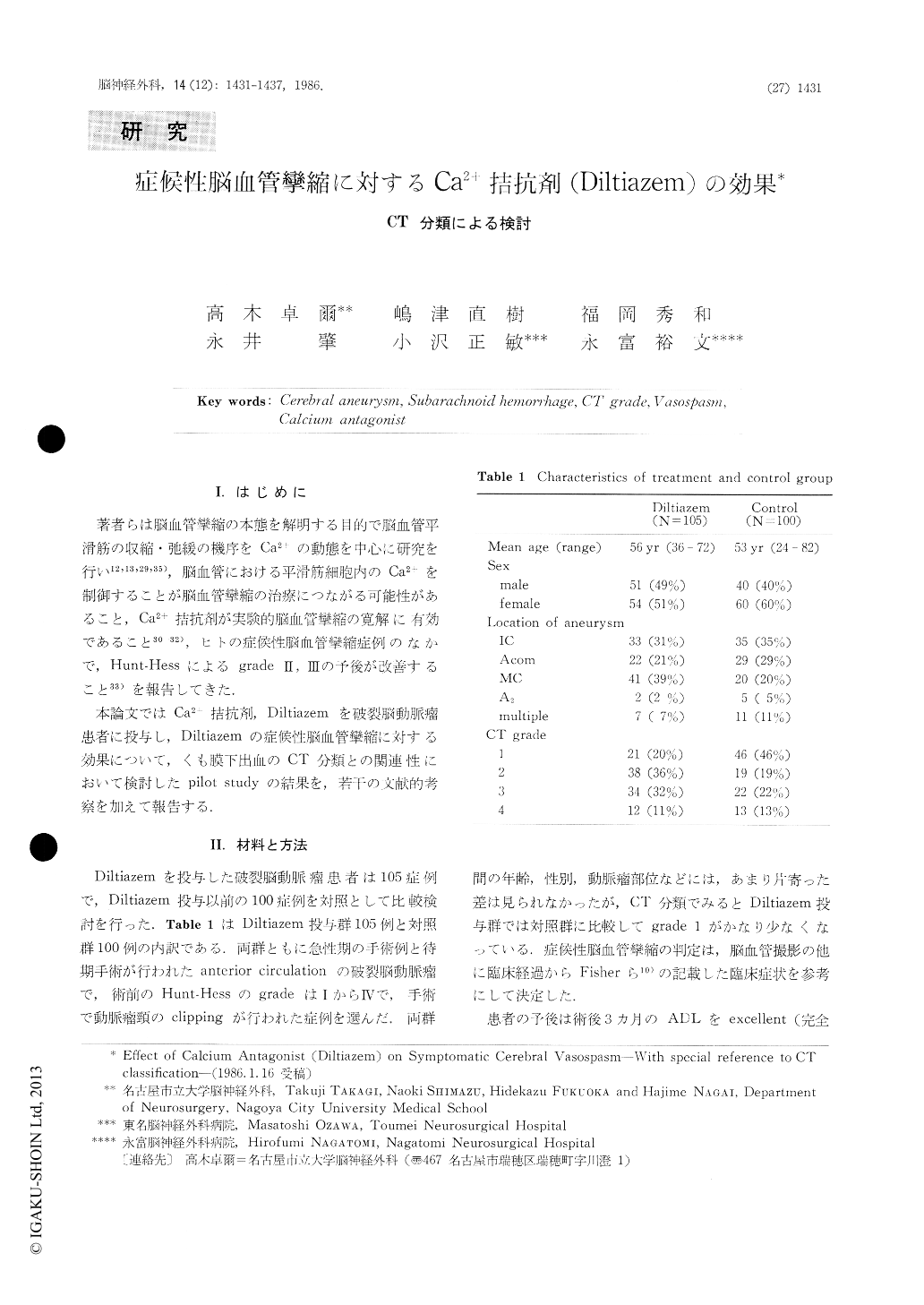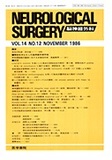Japanese
English
- 有料閲覧
- Abstract 文献概要
- 1ページ目 Look Inside
I.はじめに
著者らは脳血管攣縮の本態を解明する目的で脳血管平滑筋の収縮・弛緩の機序をCa2+の動態を中心に研究を行い12,13,29,35),脳血管における平滑筋細胞内のCa2+を制御することが脳血管攣縮の治療につながる可能性があること,Ca2+拮抗剤が実験的脳血管攣縮の寛解に有効であること30-32),ヒトの症候性脳血管攣縮症例のなかで,Hunt-Hessによるgrade II,IIIの予後が改善すること33)を報告してきた.
本論文ではCa2+拮抗剤,Diltiazemを破裂脳動脈瘤患者に投与し,Diltiazemの症候性脳血管攣縮に対する効果について,くも膜下出血のCT分類との関連性において検討したpilot studyの結果を,若干の文献的考察を加えて報告する.
CT is important for detecting subarachnoid clots and intracerebral or intraventricular hemorrhage. The presence of subarachnoid clots surrounding the cerebral arteries may be one of the causes of cerebral vasospasm. It is agreed that there is a corres-pondence between the site of subarachnoid clots and the location of cerebral vasospasm.
The authors have already reported that the appearance and severity of symptomatic cerebral vasospasm were not affected by calcium antagonists (Diltiazem), but the prognosis improved significantly for 105 patients (especially Hunt-Hess grade II and III) at the 3-month follow-up examination.

Copyright © 1986, Igaku-Shoin Ltd. All rights reserved.


